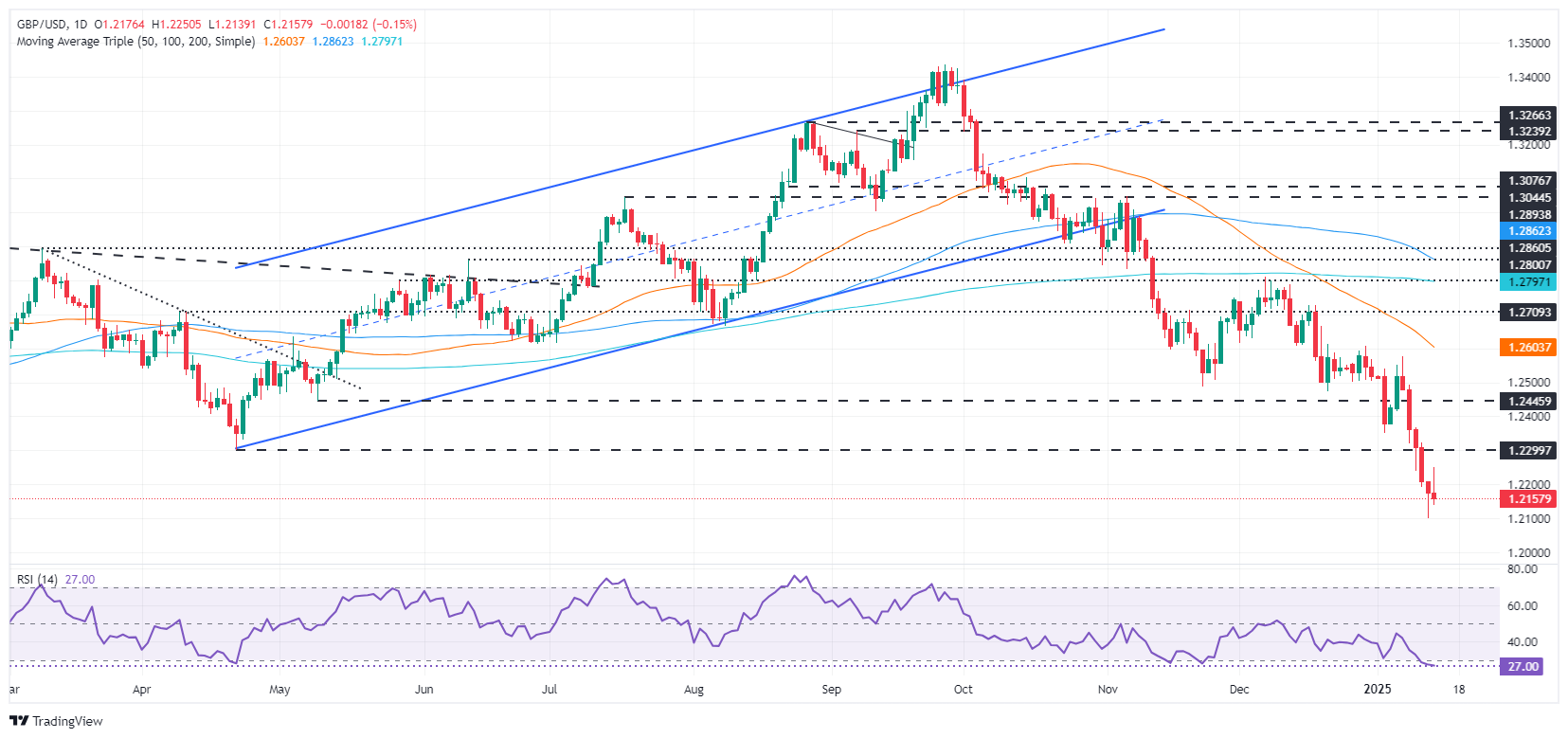GBP/USD Price Forecast: Tumbles below 1.2200 after US PPI data
- GBP/USD extends downtrend, slipping below 1.2200 after US inflation release.
- Next GBP/USD support at 1.2136; potential drop to 1.2100 may hit a new year-to-date low.
- Recovery above 1.2200 needed to challenge the week’s high at 1.2249, further resistance up to 1.2351.
The GBP/USD plunged below 1.2200 during the North American session following the release of US producer price inflation data, which hinted that prices dipped slightly but close to Wall Street's estimates. At the time of writing, the pair trades at 1.2166, down by over 0.26%.
GBP/USD Price Forecast: Technical outlook
The downtrend remains intact even though buyers lifted the pair to an intraday high of 1.2249. However, sellers sold the rip driving the GBP/USD below 1.2200, extending its losses to current exchange rates.
If GBP/USD drops below 1.2150, the next support would be the day’s low of 1.2136. On further weakness, 1.2100 emerges as the next floor level, followed by the current year-to-date (YTD) low of 1.2099.
Meanwhile, GBP/USD must reclaim 1.2200 for a bullish resumption before testing the week’s peak of 1.2249. A breach of the latter will expose the April 2024 swing low of 1.2299, ahead of 1.2300. If surpassed, the next stop would be the January 2 daily low of 1.2351.
GBP/USD Price Chart - Daily
Pound Sterling FAQs
The Pound Sterling (GBP) is the oldest currency in the world (886 AD) and the official currency of the United Kingdom. It is the fourth most traded unit for foreign exchange (FX) in the world, accounting for 12% of all transactions, averaging $630 billion a day, according to 2022 data. Its key trading pairs are GBP/USD, also known as ‘Cable’, which accounts for 11% of FX, GBP/JPY, or the ‘Dragon’ as it is known by traders (3%), and EUR/GBP (2%). The Pound Sterling is issued by the Bank of England (BoE).
The single most important factor influencing the value of the Pound Sterling is monetary policy decided by the Bank of England. The BoE bases its decisions on whether it has achieved its primary goal of “price stability” – a steady inflation rate of around 2%. Its primary tool for achieving this is the adjustment of interest rates. When inflation is too high, the BoE will try to rein it in by raising interest rates, making it more expensive for people and businesses to access credit. This is generally positive for GBP, as higher interest rates make the UK a more attractive place for global investors to park their money. When inflation falls too low it is a sign economic growth is slowing. In this scenario, the BoE will consider lowering interest rates to cheapen credit so businesses will borrow more to invest in growth-generating projects.
Data releases gauge the health of the economy and can impact the value of the Pound Sterling. Indicators such as GDP, Manufacturing and Services PMIs, and employment can all influence the direction of the GBP. A strong economy is good for Sterling. Not only does it attract more foreign investment but it may encourage the BoE to put up interest rates, which will directly strengthen GBP. Otherwise, if economic data is weak, the Pound Sterling is likely to fall.
Another significant data release for the Pound Sterling is the Trade Balance. This indicator measures the difference between what a country earns from its exports and what it spends on imports over a given period. If a country produces highly sought-after exports, its currency will benefit purely from the extra demand created from foreign buyers seeking to purchase these goods. Therefore, a positive net Trade Balance strengthens a currency and vice versa for a negative balance.

